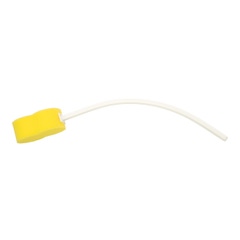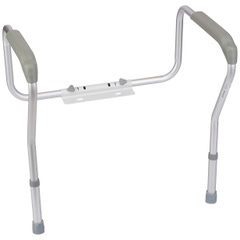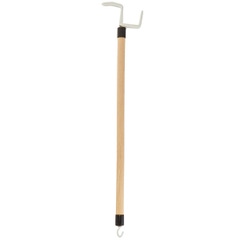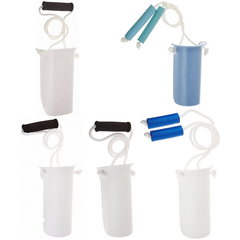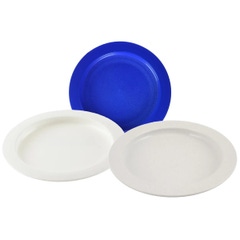Has a recent wrist injury made it more difficult to cook in the kitchen? As you’ve grown older, do you find it more challenging to get dressed by yourself or drive? Do you want to help your child with a disability be able to fully participate in school? Is autism preventing your child from interacting with their peers? Is a traumatic brain injury or limb amputation limiting a veteran’s ability to live independently?
Your doctor may recommend occupational therapy. Occupational therapists use a variety of treatment techniques to help you participate in the things you want to do.
Learn more about how occupational therapy could help you, your child, your parent, or another loved one!
- What is an occupational therapist?
- What’s the difference between an occupational therapist and a physical therapist?
- What age range/population do occupational therapists work with?
- What is an occupation?
- Where do occupational therapists work?
- What do you do in occupational therapy?
- What tools do occupational therapists use during therapy?
What is an occupational therapist?
An occupational therapist (OT) specializes in occupational therapy. Occupational therapists ask, “What matters to you?” when building a treatment plan, rather than “What’s the matter with you?” They work with people across their lifespan to help them participate in daily activities and learn new ways of doing things.
There are over 143,000 occupational therapists in the U.S.1
Occupational therapy services typically include an individualized evaluation to determine the person’s goals, a customized intervention on how to improve the person’s ability to reach their goals, and a goal evaluation to ensure the goal is met or to make changes to the intervention plan.
For example, they can determine a plan that uses the therapeutic use of everyday activities (occupations) to help:
- Children with special needs to participate in school and social situations
- People recovering from injury regain everyday skills (like bathing, dressing, and dining)
- Older adults experience cognitive and physical changes
Learn more about the different ways occupational therapists help people in this video!
What’s the difference between an occupational therapist and a physical therapist?
Both occupational and physical therapy help people regain skills, improve their independence, and modify their environment to improve their daily lives. However, there are many differences.
In general, a physical therapist (PT) works on treating the body to improve mobility, balance, and strength. For example, a physical therapist might help you learn how to use a walker after a hip replacement and guide you through exercises to strengthen your new hip joint and legs.
In contrast, an occupational therapist helps you learn how to use materials or equipment that make life easier. After that hip replacement, they might be the one teaching you how to get dressed without bending by using dressing aids.
There can be some overlap between physical and occupational therapists, especially in pediatric environments, but each are unique fields. Learn more about occupational and physical therapists in this video!
Learn more about physical therapists in The Complete Beginner's Guide to Physical Therapy.
What age range/population do occupational therapists work with?
Occupational therapists work with people across their lifespans, including infants, toddler, children, teens, adults, and seniors. They can help children meet developmental milestones, adults regain independence after an accident, and seniors relearn life skills as they age.
What is an occupation?
An occupation is a meaningful life activity. What your occupation is changes over your lifetime. Children’s occupations may include play, or developing important skills like writing, brushing their teeth, tying their shoes, or being a student. As an adult your occupation can include many roles including parent, spouse, friend, cook, musician, athlete, artist, photographer, homemaker, or businessperson. An occupational therapist incorporates your occupation into the rehabilitation process and tailors the therapy to meet your goals designed around what you need and want to do.
Where do occupational therapists work?
Occupational therapists work in a variety of settings. The most common settings include general hospitals, outpatient care centers, and elementary and secondary schools with approximately 29,700, 26,200, and 19,000 employees respectively.2
Here are two videos that show occupational therapists working with adults and children in hospitals.
What do you do in occupational therapy?
What you do during occupational therapy will depend on your individual goals.
For example, if you want to dress independently you might spend time learning how to use dressing aids and work on improving your hand dexterity.
Or if you want to bathe independently, an occupational therapist might help you find adaptive equipment like a shower chair, grab bars, or long handled bath sponges and help teach you how to transfer from a wheelchair to the shower chair and how to use each tool.
If you want to return to cooking, an occupational therapist might help you with hand strengthening exercises, energy conservation techniques like sitting on a stool instead of standing, and tools like one handed can openers, kitchen workstations, and more!
The best way to find out what your occupational therapy would involve is to set up an appointment with an occupational therapist for an evaluation.
What tools do occupational therapists use during therapy?
Occupational therapists use a variety of tools during therapy. You might use some of these same tools at home to continue living independently. Watch this video to see some of the tools used and check out a sampling of these products below.
Bathing
Bathing aids help keep you safe during your bath or shower. An occupational therapist can help teach you the proper way to transfer to a bath bench or shower chair safely so you can sit and use less strength while bathing.
Toileting
Toileting aids make it safer and easier to use the bathroom. A raised toilet seat reduces the amount of bending you need to do to sit on the toilet while a commode can be used next to the bed. There are even wiping aids available to help extend your reach!
Dressing & Grooming
Get dressed independently by using aids like a dressing stick, sock aid, or shoehorn. An occupational therapist can work with you towards this goal. A reacher is a great tool for dressing, picking up items from the floor, or grabbing them from high shelves.
Dining and Cooking
Aids like these can make it easier for you to cook meals and feed yourself without making a mess. For example, weighted utensils help reduce tremors while adding foam tubing to utensils can make it easier to grip. These tools can assist those with arthritis or reduced grip strength. There are several other kitchen aids that hold your food so you can chop, butter bread, open jars, and more with the use of one hand. An occupational therapist can help you find the best option and teach you how to use it.
Writing
Special grips and other writing aids make it easier for people with a weak grasp, tremors, or poor fine motor skills to write for school, work, or other activities.
Exercise
While most of occupational therapy is occupation-based, you might also benefit from using some exercise products to help improve your strength and function so you can perform your daily tasks better.
Pediatric Gross Motor
Hannah, a child with brachial plexus palsy, during occupational therapy using gross motor and fine motor skills.
If your child is getting occupational therapy, these gross motor tools might be used to exercise large muscles. These items might be used individually or as part of a game or obstacle course. If your child is also going to physical therapy, the same tools might be used.
Pediatric Fine Motor
Jack, a child with down syndrome, during occupational therapy using fine motor and gross motor skills.
If your child is working on fine motor skills during occupational therapy, some of these fun tools might be used! Your child might wear a weighted vest during these activities to provide a calming proprioceptive input to the brain and help keep them focused. You can purchase these same products for additional practice at home.
Splinting
Did you know that many occupational therapists can fabricate splints? The orthosis may be used to treat spasticity or contractures or for protection, support, or positioning. The splints might be created from flat sheets using a splint bath or come as a premade split that can be modified. You can learn more about the different types of splints in this article.
At-Home Occupational Therapy Kits
Explore our kits to find a variety of tools that can be used at home during your rehabilitation and recovery. Talk to your occupational therapist about the right products that you can use to continue your therapy progress at home!
An occupational therapist can help you get back to doing the things you love and need to do! Learn more about occupational therapy on the American Occupational Therapy Association’s website: aota.org
References
- U.S. Bureau of Labor Statistics. (2019). Occupational Therapists. U.S. Department of Labor. Retrieved from https://bit.ly/3kXjyDG
- Data USA. (2018). Occupational Therapists. Data USA. Retrieved from https://bit.ly/3mKZhBt
- American Occupational Therapy Association. (n.d.). About Occupational Therapy. AOTA. Retrieved from https://bit.ly/34Skkfz
- Gwynedd Mercy University. (n.d.). Occupational Therapy vs Physical Therapy - What's the Difference?. GMERCYU. Retrieved from https://bit.ly/35X7V9l
Medical Disclaimer: The information provided on this site, including text, graphics, images and other material, are for informational purposes only and are not intended to substitute for professional medical advice, diagnosis or treatment. Always seek the advice of your physician or other healthcare professional with any questions or concerns you may have regarding your condition.








 France
France Australia
Australia


